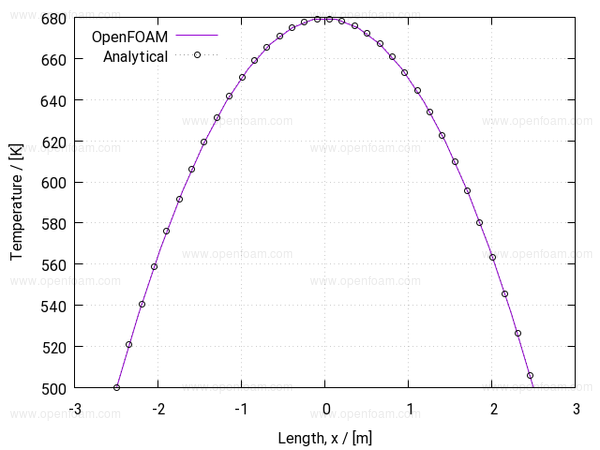This source provides users with the ability to add Joule Heating contributions to any thermal solver.
Properties🔗
The option solves an equation for the electrical potential, V, of the form
\[\div (\sigma \grad V) = 0\]Where \(\sigma\) (sigma) is the electrical conductivity. The thermal source is then given by
A sample result is shown below

Usage🔗
The option is specified using:
heating
{
type jouleHeatingSource;
active true;
jouleHeatingSourceCoeffs
{
anisotropicElectricalConductivity no;
}
}
The electrical conductivity can be specified using either (see usage):
- If not present the
sigmafield will be read from file (standard field sigma) -
If the
sigmaentry is present the electrical conductivity is specified as a (potentially uniform) function of temperature using aFunction1type, e.g.heating { type jouleHeatingSource; active true;
jouleHeatingSourceCoeffs { anisotropicElectricalConductivity no; // Optionally specify sigma as a function of temperature sigma table ( (0 127599.8469) (1000 127599.8469) ); } } - If the
anisotropicElectricalConductivityflag is set to ‘true’,sigmashould be specified as a vector quantity.
Further information🔗
Tutorials
Source code
